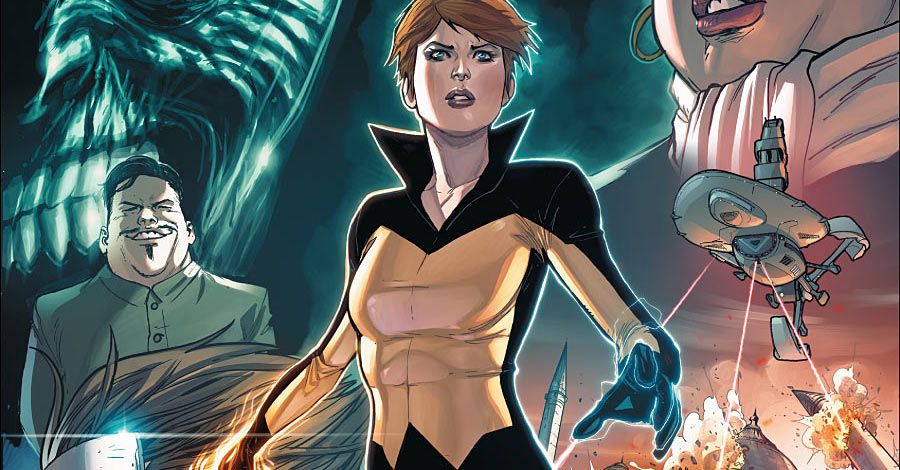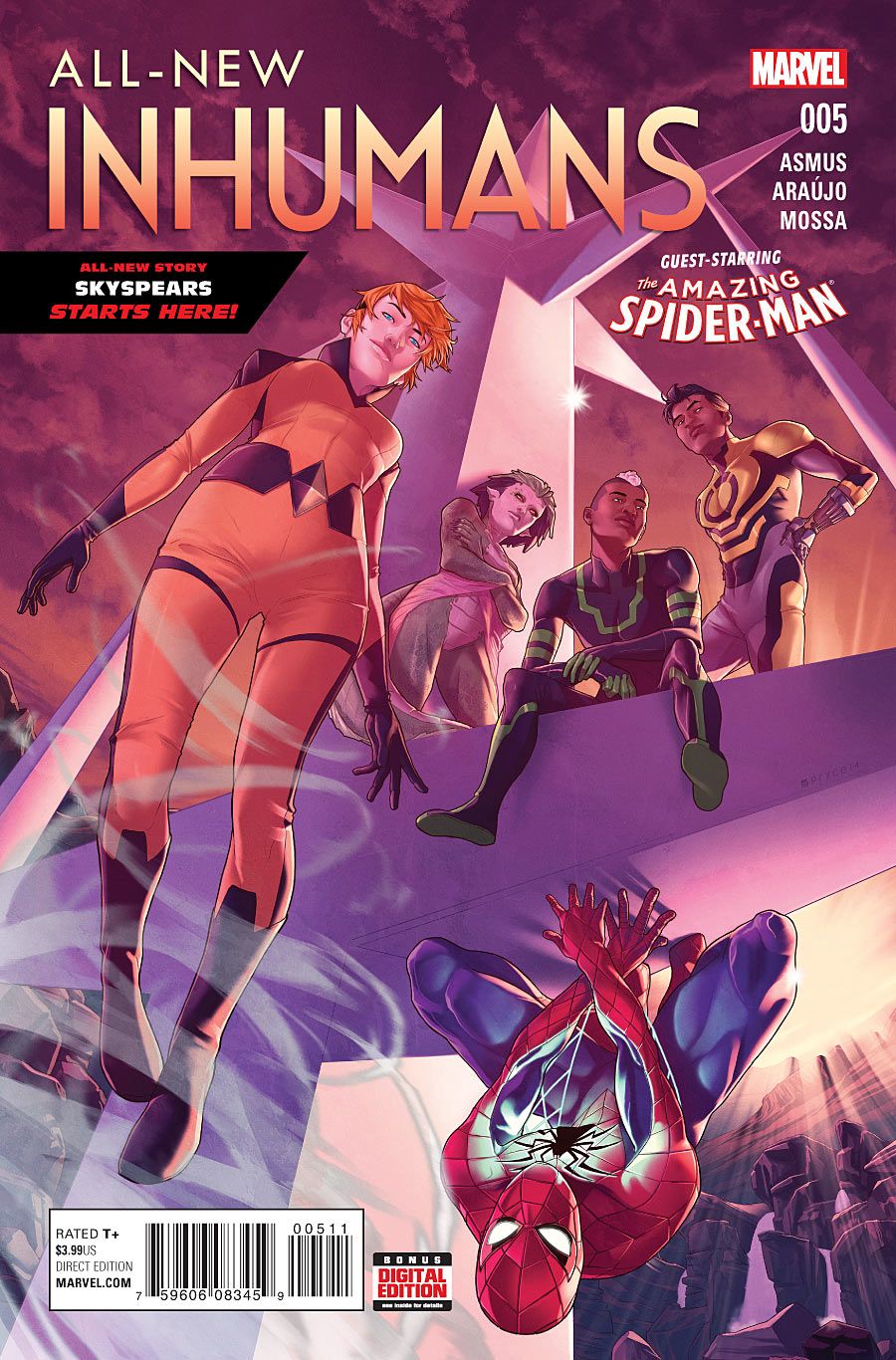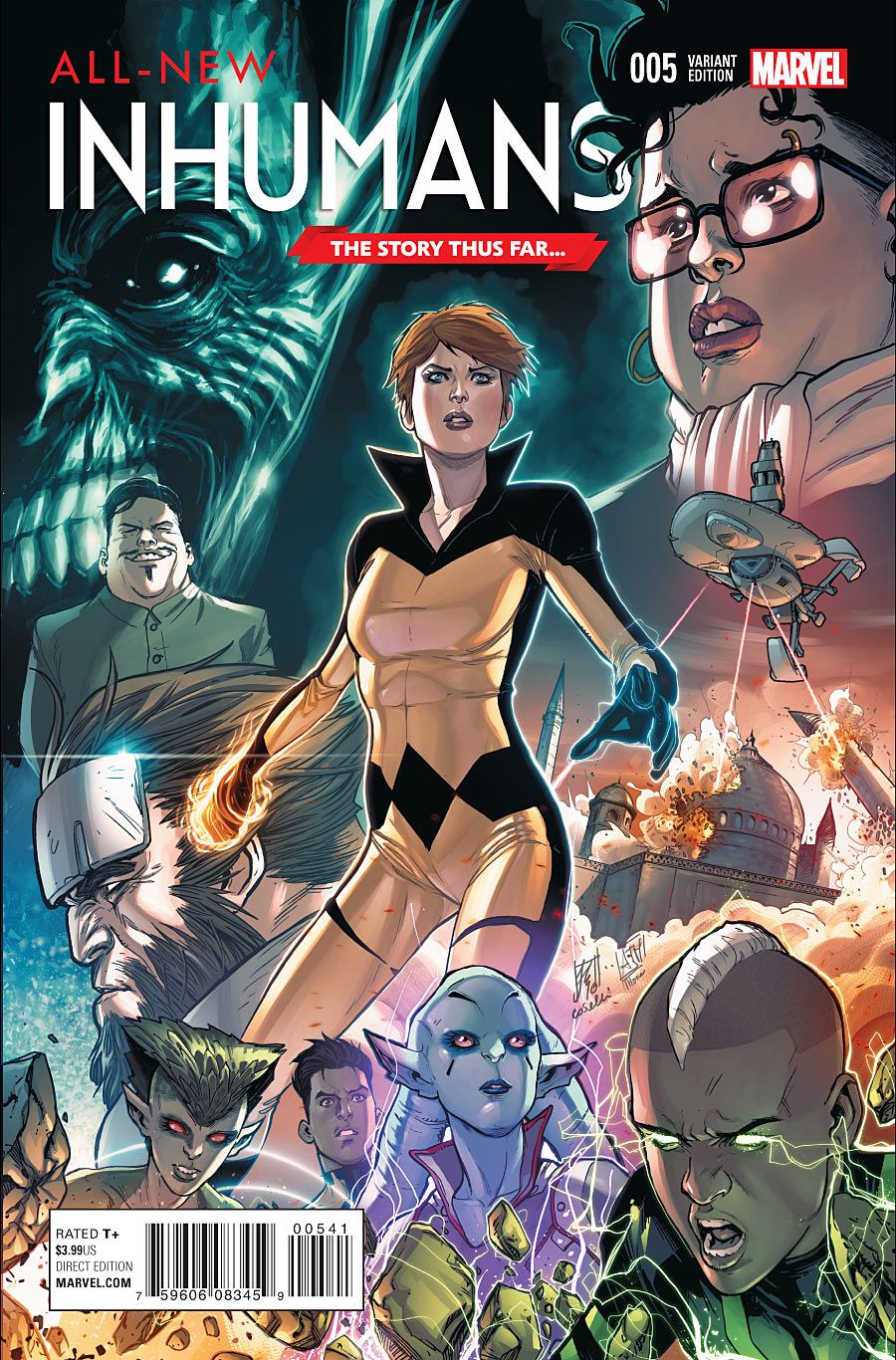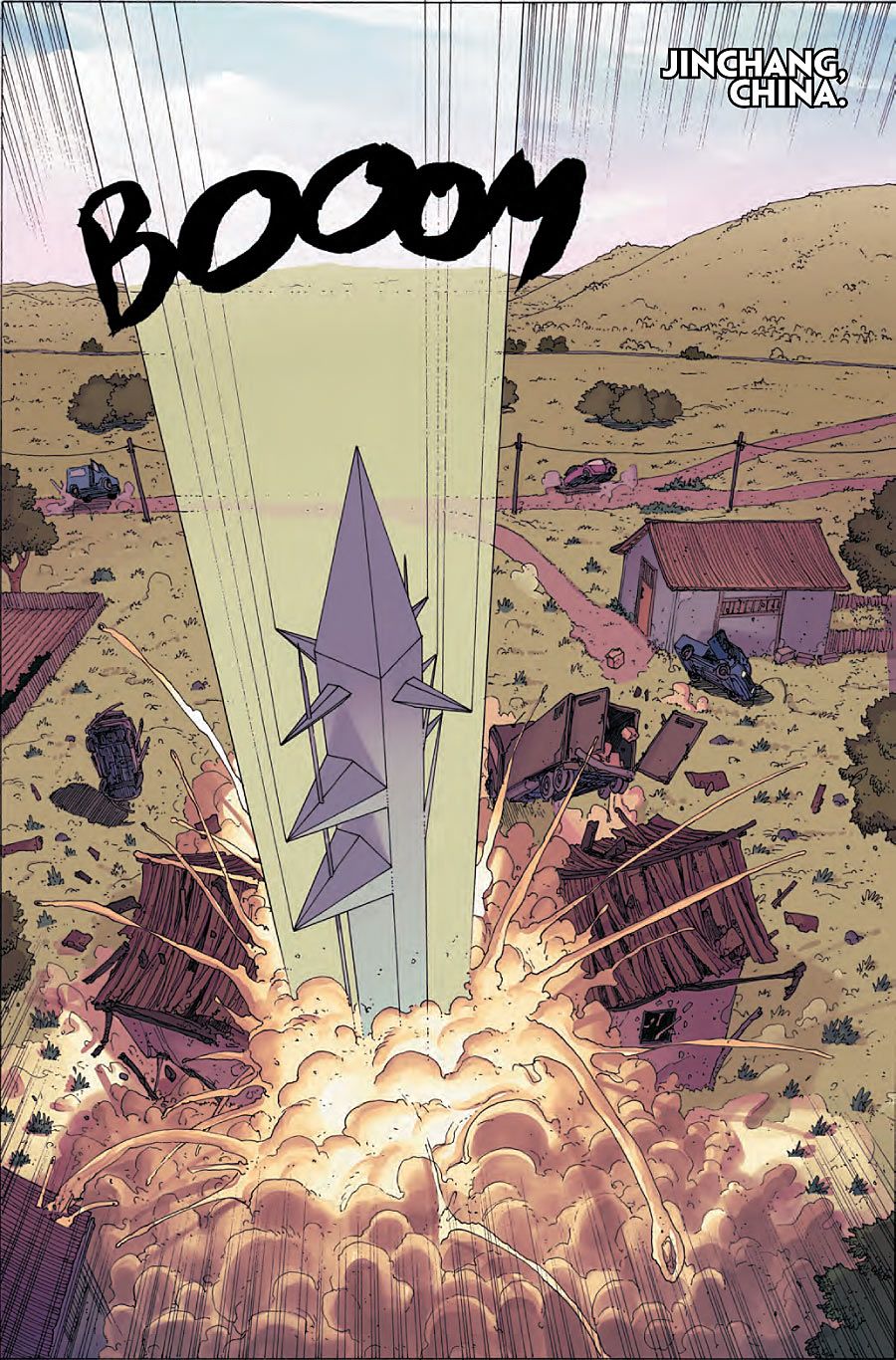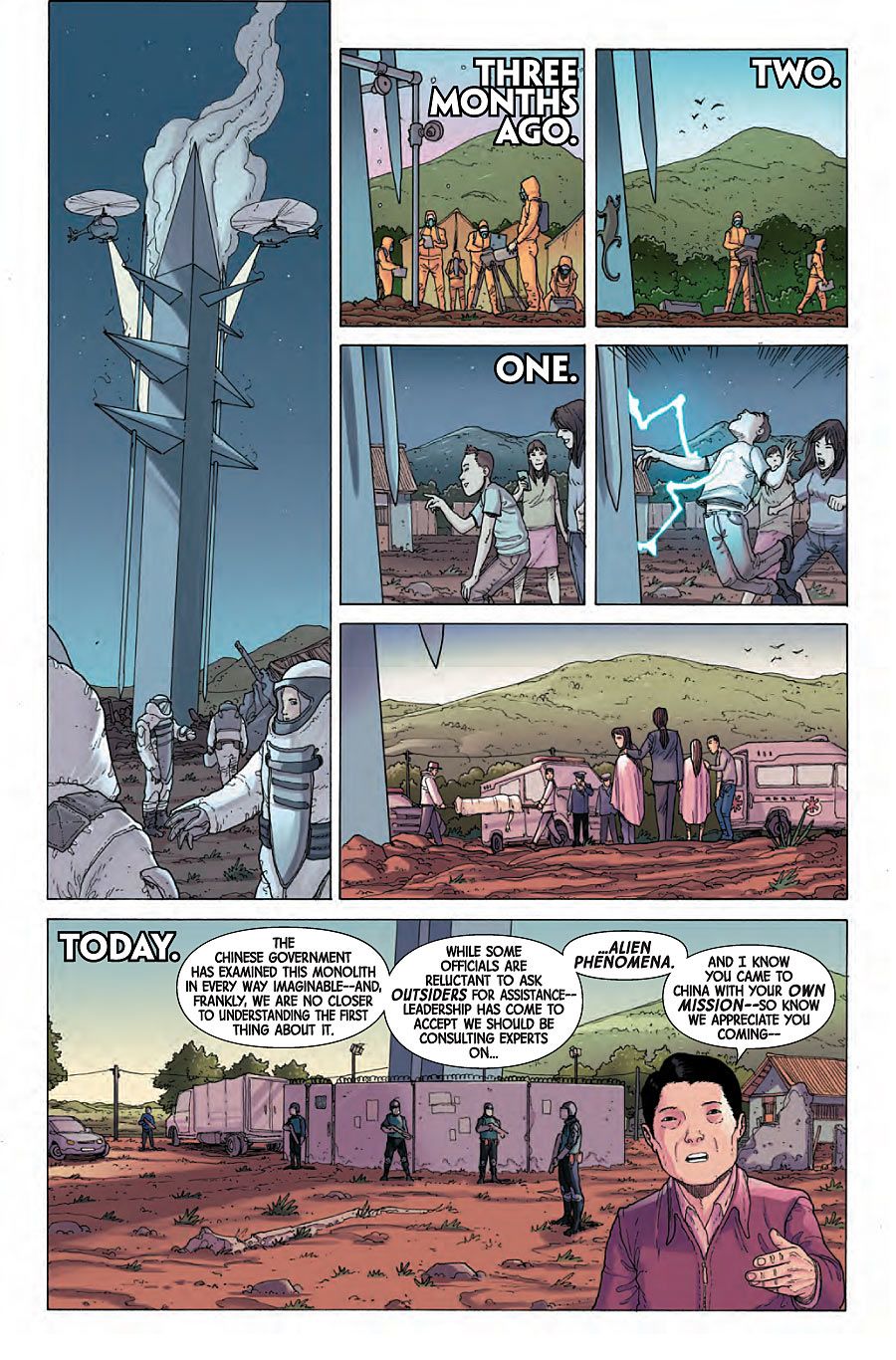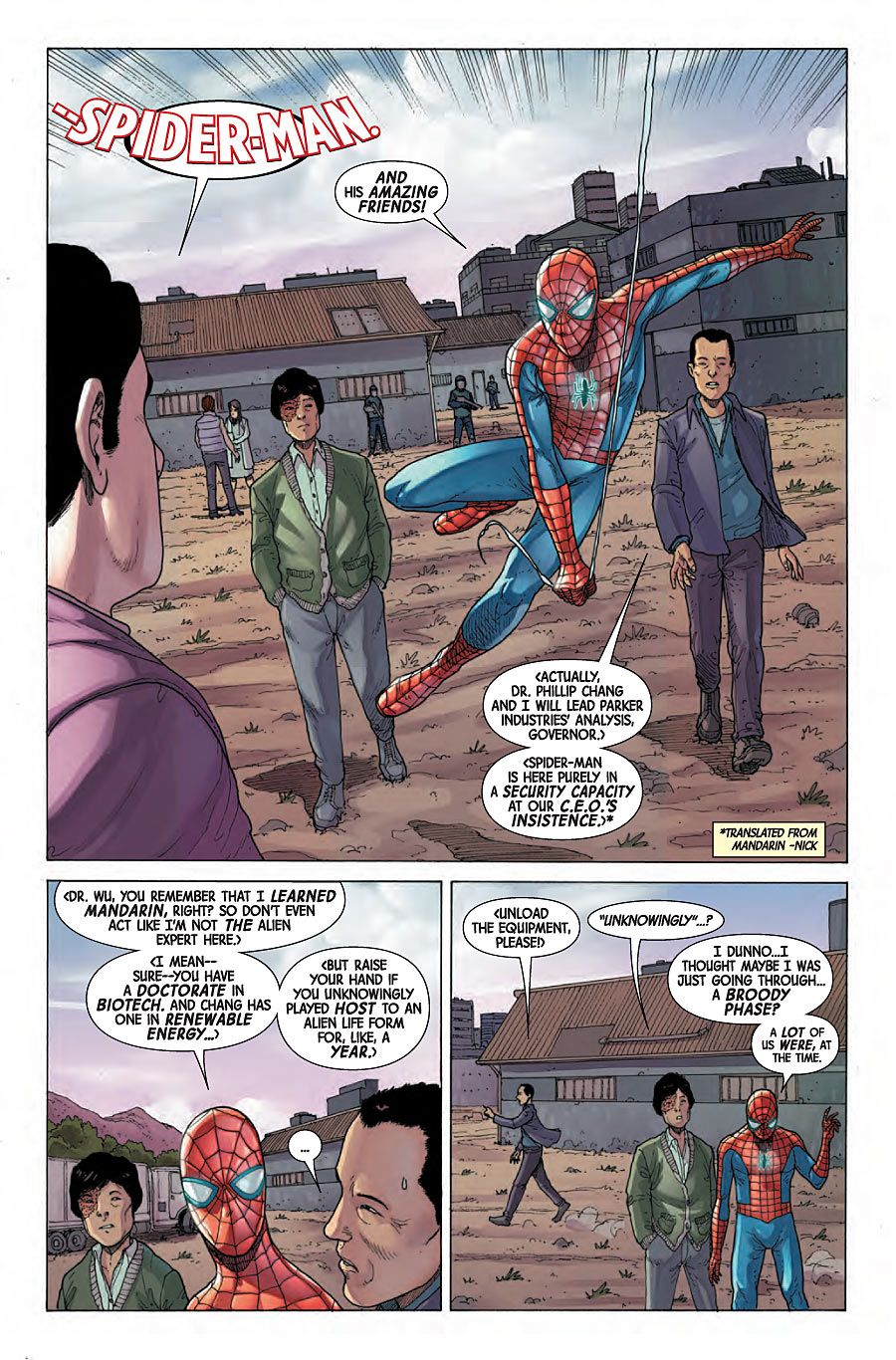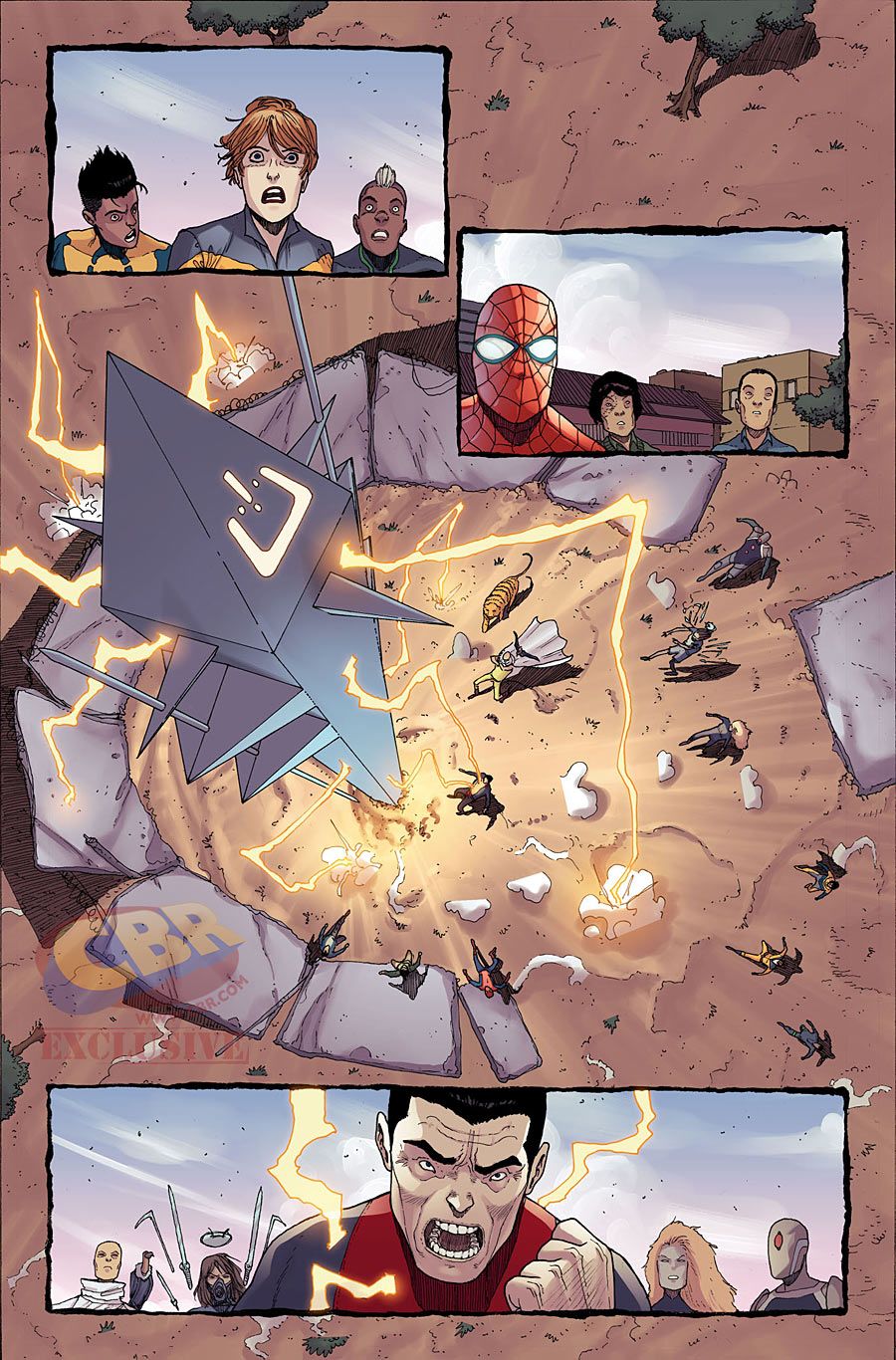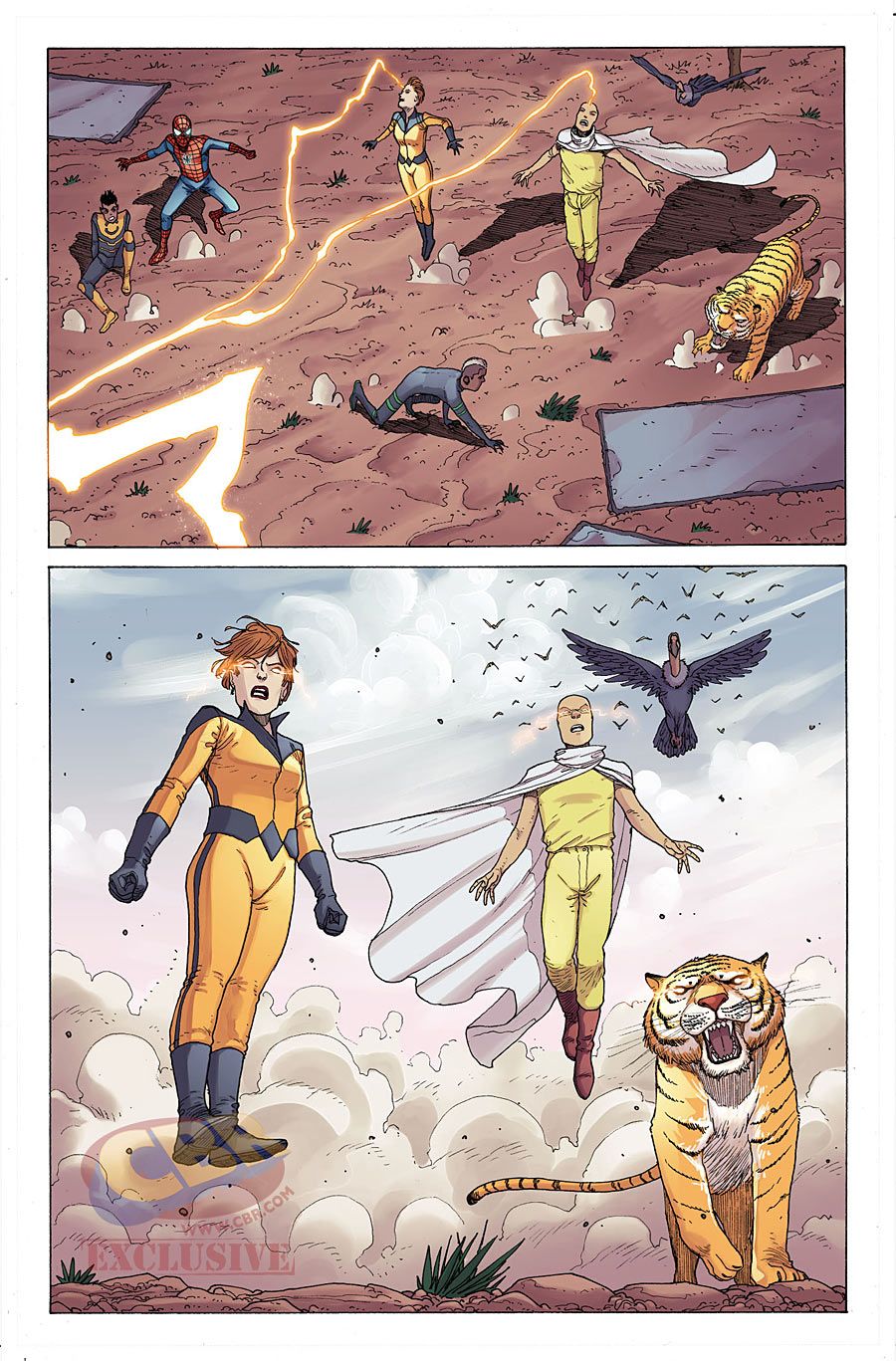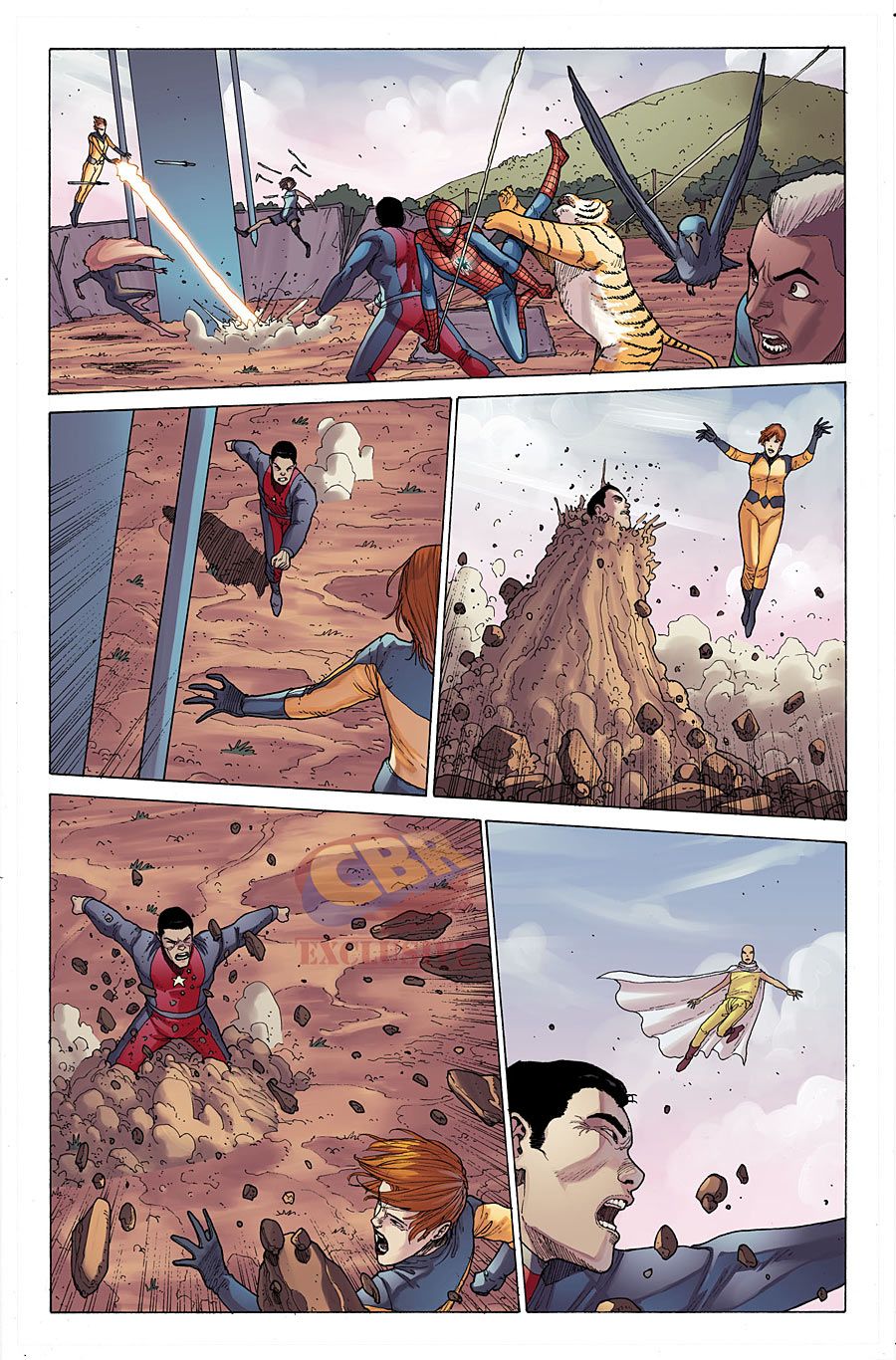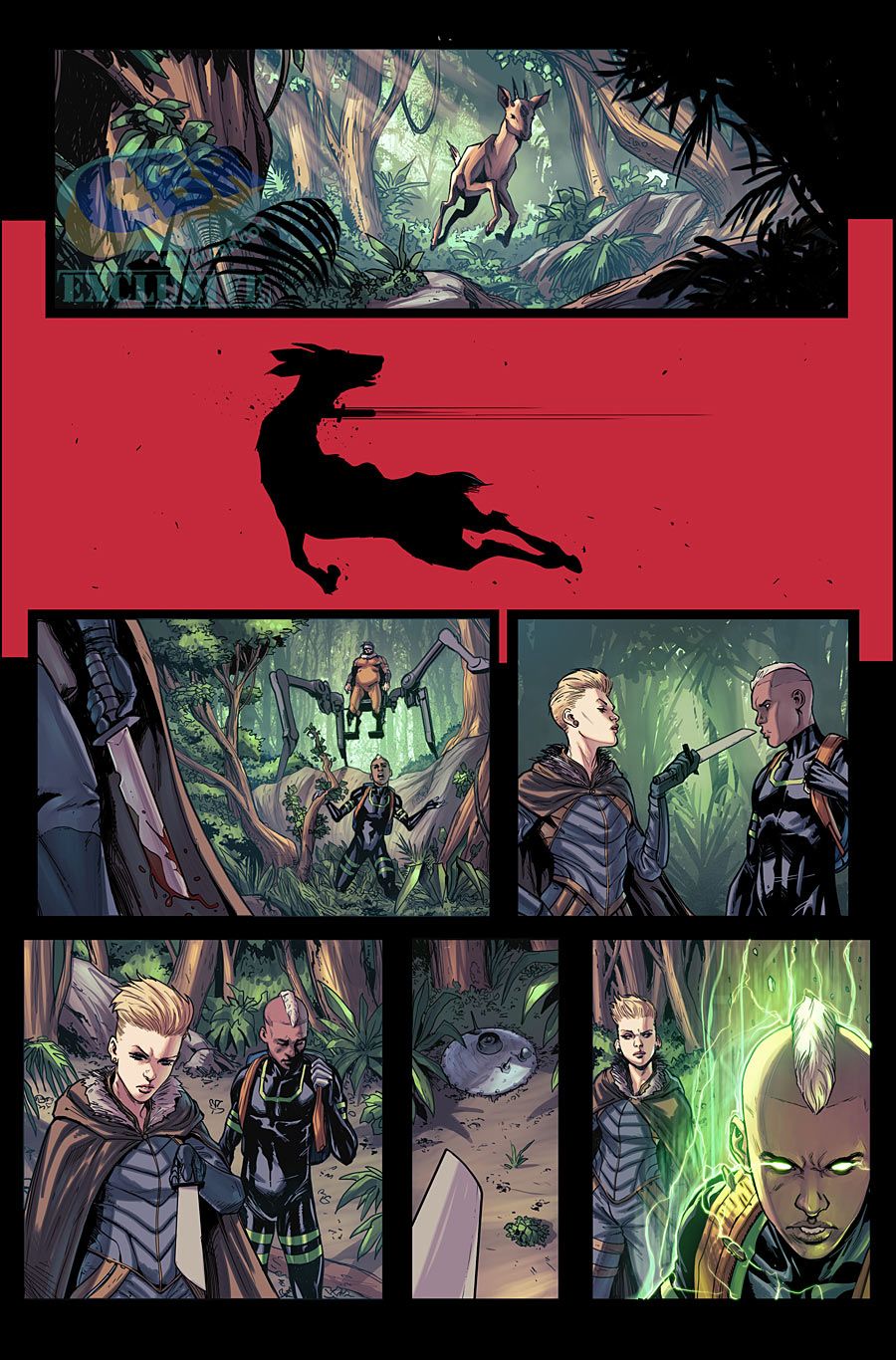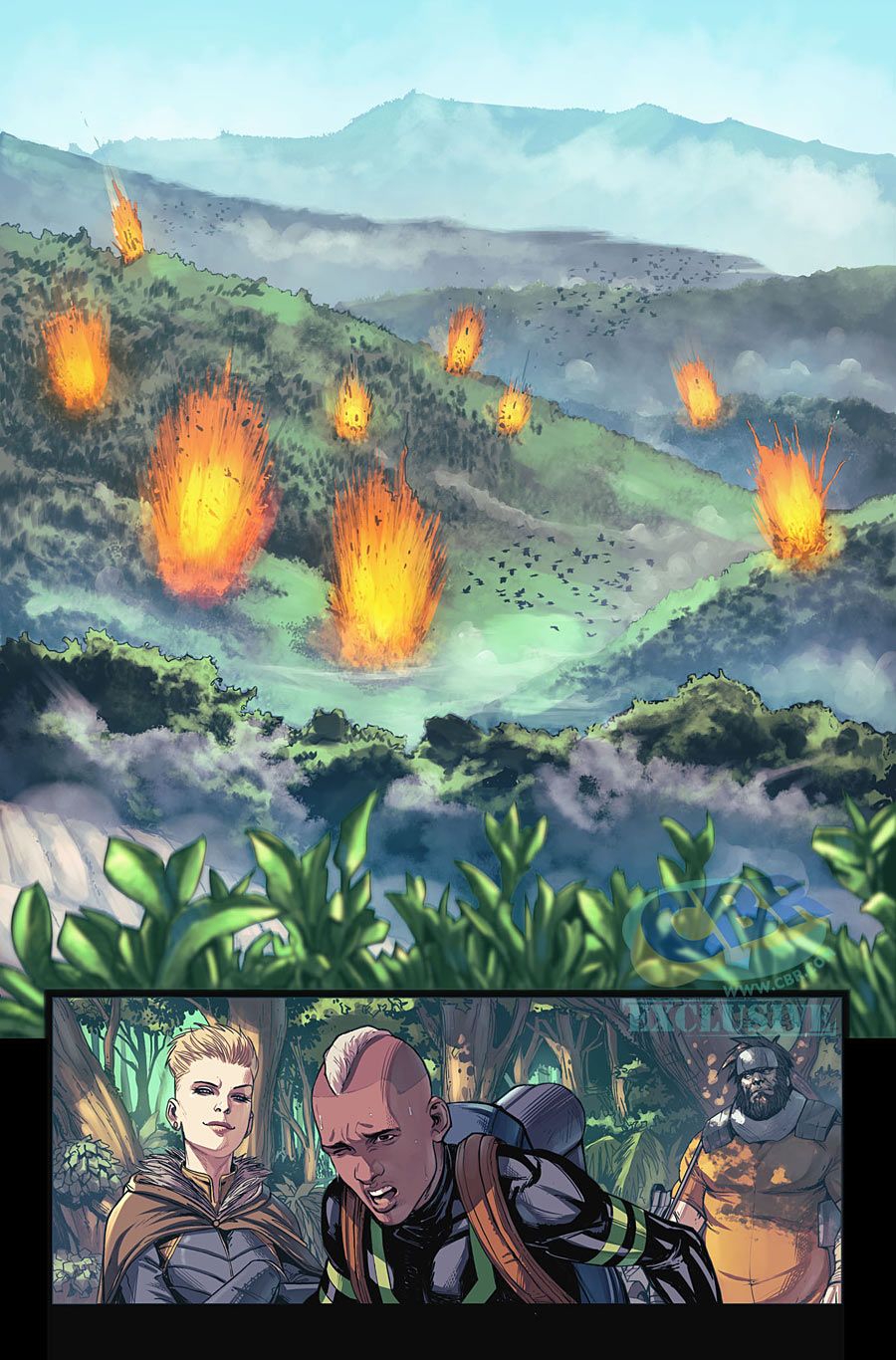Thanks to the transformative effects of the Terrigen Cloud, Inhumans are now everywhere. No longer an insular society, Inhumans are quickly becoming the new normal in the Marvel Universe. To protect and bring newly awakened "Nuhumans" into the fold a team, Crystal of the Inhuman Royal Family leads a team tasked with safeguarding her people's future in "All-New Inhumans" by writers James Asmus & Charles Soule and art by Stefano Caselli.
RELATED: Asmus' "All-New Inhumans" Confront Global Threats & Ancient Mysteries
The book's first arc took them to Sin-Cong where their diplomatic mission quickly became one of espionage as they investigated claims that no new Inhumans emerged when the Terrigen Cloud rolled over the country. The mission was completed when Crystal and her team helped overthrow the country's brutal dictator. Asmus joined CBR News to discuss whether the events of that arc will come back to haunt the team, the morally murky choices his cast will be forced to make and future plans involving Spider-Man, Ana Kravinoff and "Civil War II." The writer also talked about writing the next storyline solo and more ties to the larger Inhuman epic unfolding across "All-New Inhumans" and "Uncanny Inhumans."
CBR News: James, with this first story you showed that "All-New Inhumans" isn't just a super powered adventure book -- it's also a political and espionage thriller. Reintroducing the nation of Sin-Cong was a good way to illustrate that, and the end of the arc seemed to suggested you're interested in exploring the consequences of Crystal and her team engaging in political intrigue and conflicts like regime changes.
James Asmus: Yeah, Charles Soule conceived the premise for this book of Inhumans traveling the world in the wake of the Terrigen Cloud and trying to help the new Inhumans. Inherently and right away I saw the political weight that's got to come with traveling to whatever sovereign nation the winds blew you to, and I loved that opportunity. I've always liked my comics most when they speak to something real.

That's not to say we can't have our sci-fi action with it, but I was excited to create a book and situation where you can't just throw powers at a problem. There are political ramifications to everything that they're going to do. That creates a more complicated reality and leads to difficult choices for your heroes. Because you open things up and you start to realize there are different types of heroism, and our cast will have to choose some uneasy paths.

As I started writing the book the closest thing I could compare it to in comics is something like "The Walking Dead" where they really put a lot of weight on the decisions made to protect this group of people and how you trade off from that. It means you can't live your most ideal moral version of yourself. So how do you preserve your values when there's real life and death stakes at all times?
That's kind of a scattershot response, but the truth is it's all part of why the book is this way and all of those things kind of segue nicely into finding Sin-Cong out of old school Marvel history. It existed back in issue #18 of the first volume of "Avengers." It was right after Hawkeye and Scarlet Witch joined. Even all the way back then it stood in as an analogue for real world politics. That fit perfectly with what we're doing, but then they had giant humanoid robots that could defeat the Avengers. So you kind of got your sci-fi and your geo-politics all wrapped up.
We hadn't seen the country since that "Avengers" story though. At the time of that story it was meant to speak to the Vietnam War. Now it has overtones of a different country. [Laughs]
[Laughs] Right, we'll leave that to readers' imagination, but I'm sure if they think hard they can figure out what you mean.
[Laughs] Yeah, we weren't trying to be extremely coy, but I also don't want to court anyone to break into my email.
[Laughs] Going back to what you said about characters and their ideal moral selves, having Crystal reveal she chose Flint as an advisor because he still has a very idealistic and human perspective seems like commentary on that.
Yeah, Charles laid out the direction of this book and a lot of who would be on the team, at least of the existing characters. So for me, in thinking about the values they bring into the equation, I think Flint really is the idealist of the team. It helps that he's the youngest. I think it's easier to feel your idealism passionately before the world has disabused you of that. [Laughs]
Crystal has always been a real compassionate pragmatist. She was the first of the Inhumans to reach out to humans in "Fantastic Four." She helped broker peace by having a political marriage to Ronan the Accuser in "War of Kings." Through it all she was lead by a real kind of empathy to reach out to people, but she's also battle hardened. So I think putting Flint in there as sort of the angel of her better nature to try and keep those caring, idealist parts of her nature alive made a lot of sense in terms of why he's there.

Then on the flip side you have Gorgon who is the most bitter, standoffish, tough and grumpy kind of warrior that you could get. [Laughs] Since he was paralyzed in "Inhuman" though, this is our chance to explore how that's starting to affect him. We're just starting to chip away as he's just starting to come to grips with the fact that his old personality is a shoe that doesn't fit anymore. He's starting to realize that his mask is slipping and he's realizing that he's not quite sure who is really underneath it anymore.
Right, it seemed like by the end of this first arc he wasn't in a happy place, but he was beginning to move forward emotionally.
Yeah, and that was something that has been interesting to explore. It's a strange thing to have someone truly become disabled in a comics world that has magic and technology where nanobots can flush out diseases, or these other high-tech things. So I have some opinions that I think made sense for Gorgon that you'll start to hear more explicitly in the next two issues. There are reasons he's not going to try whatever works to get out of it, but it also gives us a chance to tell stories of the emotional struggle of losing some of your capacity in one form or another. I don't pretend that it stands in for everyone's experience, but to just show that struggle is a real thing and show how one person might deal with it is a story that I've really been compelled to tell.
RELATED: Soule's "Uncanny Inhumans" Turns Up The Noise In The Quiet Room
Will each member of your cast get their own big moments and big arcs?
From the beginning when my editor Nick Lowe asked me if I would be interested in the book one of the things he said was, "We really want you to drill down into who these characters are as people, and put them through some really formative challenges and experiences."
One of the things we talked about was how Chris Claremont's early years of X-Men started with them all being a different nationality in "Giant-Sized X-Men," but then he dug in and gave them all back stories, real world views, and truly nuanced perspectives on the world. We loved those characters because we watched them grow deeper, face their first challenges, fall in love for the first time, experience heartbreak and disillusionment, and lose someone important to them. We lived their formative experiences with them.
Nick basically said to do that with these characters in whatever way you want. It's been a joy to get to know them and destroy them. [Laughs] All of these things we have lined up are going to be the formative stories for these characters in a lot of ways. That's a delight as a writer to get to do, as opposed to just writing the 400th time a hero punches out a villain.
Are you also interested in bringing in some of the soap opera-style sub-plots that have been a staple of team books like the Avengers and X-Men?
Yeah, we haven't had enough kissing in this book, but it is coming up soon. There's a lot of internal drama and heartbreak coming. My entry point for stories, what makes me interested in telling them, are always what the character's emotional experience is. Then I kind of build plots to challenge them more, and to push those buttons more, as opposed to just saying, "Wouldn't it be cool if this thing happened?"

So every story we have loaded up in the gun is really about putting our characters through a lot of experiences.
The first arc of "All-New Inhumans" introduced three new and very powerful Inhumans: Swain, Panacea and the Living Dream. What inspired those characters?
First, credit where credit is due. Charles Soule had some notes for the series when I came on board and one of them was the basic plot for this first arc where a country is the first to deny that any new Inhumans emerged when the cloud passed over. We live in a real world where dictators make these pronouncements about persecuted groups not existing within their borders. So I thought that was a real tantalizing premise. He had this concept that the dictator would have gotten rid of a bunch of the new Inhumans, but one had actually transformed into a non-physical dream-like state, which is something that I found exciting.
Trying to dig down and find emotional and psychological place of a character like that was an interesting challenge; to try and give voice to a character whose very sense of identity and existence is going through the bends. You don't have a body and your one memory is a hazy recollection of transforming at the same time as people are being killed. The idea that you're kind of in everyone's minds without really existing was really kind of a fascinating and horrifying idea to have to work out the particulars for. That's a villain that I'd really like to revisit once we've built some more stuff in this world.

Swain was a character initially born out of practical consideration. Someone else needed to run the ship so Crystal can go wherever she needs to go. I started to brainstorm a few different ideas including having their ship powered by an Inhuman who had horrifically transformed into a massive, functional battery. Hub, as we call him, is a gigantic creature who's constantly generating energy. The experience was excruciating until they built a ship that could siphon off energy and ease his pain. From there, I loved the idea our captain would be an empath who could communicate with Hub non-verbally. They could control 70 percent of what's happening on the ship with unseen emotional conversations. Then I realized there's value to having your captain be someone who can also dismantle tensions in the room, especially when you're doing diplomatic missions. They can quietly and invisibly lubricate the process, which of course is something that if the larger world found out about would probably get the Inhumans in a lot of hot water. So there's kind of a slow burn tension to that which I liked as well.
We're also going to dig into the fact, and you sort of see this at the end of the first arc, that this is not a comfortable power for Swain when she can't control it because she doesn't know how many of her relationships are genuine, and how many are of her own making. She very consciously does not want to force anyone's hand in these personal relationships.
Panacea came from my interest in exploring a broader scope of Inhuman transformations, and explore how physical chance might affect someone's brain as well. And the idea of a character losing any and all sense of emotion as a result of the transformation was too intriguing to pass up.
I also wanted to create a character with healing abilities, or at least have one in my back pocket, but I then realized that putting those two ideas together is a really different formula than I'd seen before. There's an unusual tension in someone with the capacity to heal, but no inherent interest or empathic compulsion to actually help anyone. When you objectively see death is a normal thing that should happen it creates an interesting conflict for other people to deal with.
So those were the ideas behind those characters, and I think if the whole team is a spectrum of perspectives Flint is this bleeding heart optimist. Then you have Panacea who is just devoid of emotion and utterly practical. That helps give you you anchor points on either end, and it allows the series to look at complicated issues from a lot of standpoints.
Fan-Favorite Mutant Returns in "All-New Inhumans" #1
We saw an established mutant character, Joanna Cargill AKA Frenzy, in the first issue, but she didn't appear after that. Are there future plans for her return?
I definitely have plans to bring her back. My concept was that Crystal is giving her ships, supplies, and now a home base. So she can go into the field, get ahead of where the cloud is going to hit and rescue mutants. I was intending for us to see Frenzy's mission in the third arc, but the main story needed more space to to have all the weight it needed to and earn its roots. So sadly it got squeezed out. I'm going to try and get our eyes on that story as soon as we can thereafter though.
Spider-Man shows up in this week's "All-New Inhumans" #5. What's it like writing Peter Parker in his new, ultra successful status quo and bouncing him off of your cast?
I kept him as Spider-Man in the issues because I like him to still have a bit of low status. [Laughs] Spider-Man really fits my own take-the-air-out-of-the-situation sensibility. I've definitely written a lot of characters like that, but this series doesn't have someone who is that kind of proxy right now. So it was very fun to get to plug him into the story. I realized I might need to find myself a smart ass to put in here on a more regular basis. [Laughs]
I've had very few occasions to write Spider-Man and I'm so thrilled and delighted any time I get the chance. I also love what Dan Slott is doing right now [in "Amazing Spider-Man"]. Our cast is going around the world to both follow up the Terrigen Cloud and and to investigate these Skyspears that are scattered around the globe. So Parker Industries made perfect sense for an organization our characters might run into and to perhaps set up a more ongoing relationship with.
Then in May's "All-New Inhumans" #7 you kick of a new story featuring another character from the Spider-Man universe, Ana Kravinoff. What made you want to bring her into the book and what's your sense of her as a character?
I have always just weirdly loved her. Kraven the Hunter is one of my all-time favorite Marvel villains. I think he's so clearly defined and has a wonderful justification to engage in the Marvel Universe in all kinds of different ways. I actually really liked Ana as an extension. She's really dark and really compelling and there was something very specific that I wanted to do with her. There are some very real changes and ramifications coming for her in our book.
Nice. Will she be more of a series regular or just a guest-star?
She's a big part of the third arc, and we're definitely going to do a lot more with her going forward, but she's not exactly a team player. Don't expect her to get her own room on the R.I.V. any time soon.
I understand your regular artist Stefano Caselli will be drawing the story with Ana, but the two part Spider-Man tale will be tackled by an artist who has experience both with Inhumans and otherworldly sci-fi, Andre Araujo. What's it like working with each of them?
Andre had done some work in the back half of Charles' run on "Inhuman." He has such great character to his work. It's different from Stefano's. Stefano gives a weighty performance. He especially brings a lot of magic in his characters' close-up reactions. I think Andre, meanwhile, does the most delightful body language. He sells a different kind of humanity for these Inhuman characters. I buy into them as these oddball people. He also draws a fantastic Spider-Man!
He was very proactive in telling me where he thought he could get better results by laying out a page or pacing things a little differently than what I had scripted. I'm always thrilled and relieved when that happens with my artists because I guarantee that they know better than I do how their work can best be served. So I think people will be really happy with the outcome.
In "Inhuman" and more recently in "Uncanny Inhumans," Charles hinted that the Inhumans have a long term plan that involves building an army to combat a mysterious antagonist. Does "All-New Inhumans" also figure into that plan considering Crystal and her team are recruiting members for that larger army?
Yes, and the subplot in these two Spider-Man issues also uncovers another secret of the Inhumans right now in a way that very much might blow up in their faces way before they were hoping for it to come to light. It's funny because there's a lot of cards that are being turned over very naturally in the story right now that kind of fit perfectly. The bigger character story came first, but then it was clear. this was a perfect way to tip our hand a little and set the stage for some of the biggest stuff that's coming down the pipe.
How does it feel to get to plan that stuff with Charles?
When I came on he had a concept document about building the two different titles and how he delineated the two. So I got a chance to see what he wanted for Inhumanity in general -- it's been pretty easy. After launch, our check-ins have mostly been like, "Hey! I think I can work in XYZ in the next story." And he's like, "Great! I hadn't carved out a place for that yet!" Things have been lining up naturally and pretty well.
I'd also love to say -- I know some people don't know the Inhumans' story or they may feel like they missed their entry point, but "All-New Inhumans" is really designed to give you the basics of what you need. Our characters are uncovering the layers of Inhuman mythology -- new and old -- from square one.
And in the meantime it's just good, new characters being put through some crazy experiences; and hopefully they're some fresh character types that we hadn't have enough of in the Marvel Universe. I love that there are readers excited to discover new and diverse characters going through their formative experiences in the Marvel Universe.
"All-New Inhumans" #6 is on sale today from Marvel Comics.

